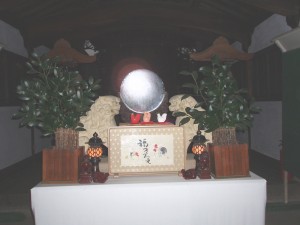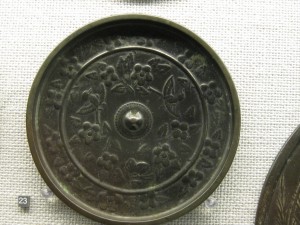
Altar mirror
Mirrors in Shinto are certainly worth reflecting on!
It seems in ancient times there were two main spiritual uses.
One is typified by Amaterasu’s mirror, namely the capturing of a person’s essence through their reflection. It thereby becomes a symbol of the person. It explains why Amaterasu handed her mirror to her grandson, saying that it should be regarded as herself. Amaterasu’s mirror is now Japan’s holy of holies, housed in Ise Jingu.

Ancient bronze mirror
The other main function of mirrors in ancient times was in warding off evil spirits. Mirrors were attached to the front of boats for this purpose, and Siberian shamans wear them on their outfits. As I understand the use, it works because evil is inherently ugly and when an evil spirit sees itself in a mirror it is scared off by its own appearance.
It occurs to me that both uses could be concurrent, in that one presupposes the other. If the spirit of Amaterasu is contained within a mirror, radiating light and goodness, then that sure is going to scare away any evil spirits!
Buddhism too caught on to the symbolism of mirrors. The Sixth Patriarch said, ‘Mind is like a mirror and you have to polish it daily to avoid the dust of life.’ One clever monk though pointed out that theoretically there is no mirror, since nothingness is the ultimate reality!

Thank you! very pleased to read